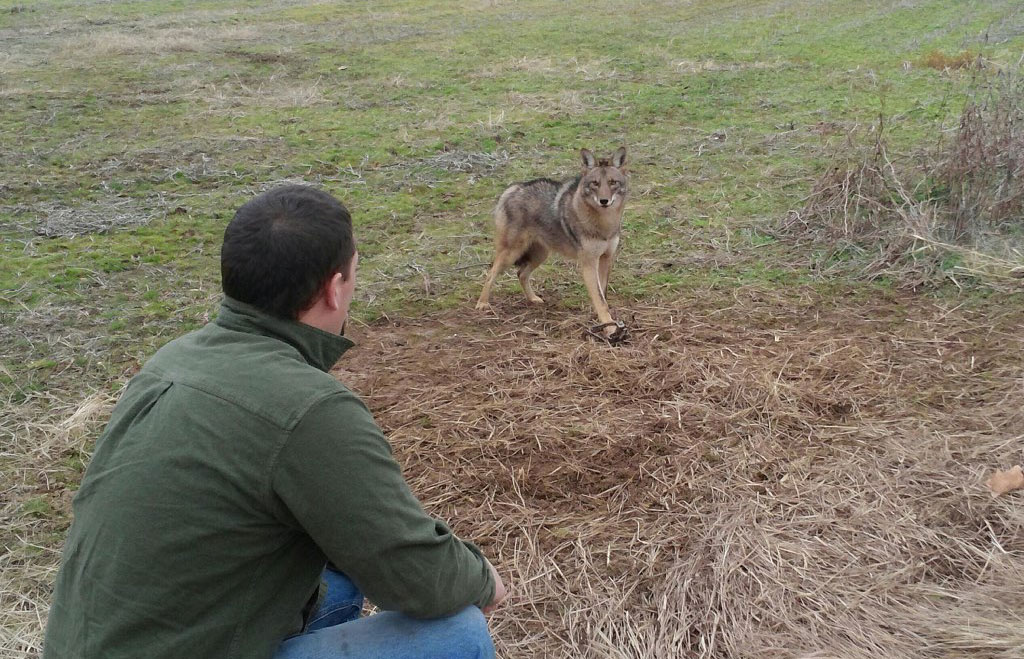Bob and Suzie Smith of Lexington, Tennessee, joined the Mossy Oak GameKeepers ProStaff in May 2017, when they were recommended by another ProStaffer, Jason Patterson.

Suzie Smith shared:
“I've really been intrigued by Mossy Oak’s GameKeepers program. I've learned that being a GameKeeper is more than just planting a green field. We plant green fields in places where we’ve never hunted to increase the nutritional level of the food we offer on our property, to help the does stay as healthy as possible and to give the fawns the best nutrition we can provide.
“One of the things that we did some of in the past, and we now know we’ll do more of this year than we've done in the past is predator control. We've increased the number of acres of corn that we've planted, which increases the number of mice that feed on the corn, and that increases the number of coyotes that feed on the mice. We’ve noticed that we’re getting just about as many coyotes on our property now as we are deer. As soon as we plant the corn, the coons and possums are digging up the corn. So, we know we’re going to have to increase our trapping and harvesting of these critters as well. We usually put out live traps before we start planting. Then we can take as many predators as possible before we put our corn in the ground.”
Becoming a GameKeeper is seeing how all the different parts of habitat management come together to make ideal habitat for deer and turkeys. Predator control is one aspect of managing wildlife that’s often overlooked. Besides foxes, coyotes, coons and possums, the Smiths also trap beavers.
“My son Halton really likes to trap predators, including coyotes and bobcats,” Bob said. “The Smiths have learned that being a GameKeeper is a continual process of trying different management strategies. Then at the end of the year, they determine which strategies have worked the best and those that can be improved. Being a GameKeeper is more than just improving the property you hunt for wildlife. It’s also about teaching others the benefits of being a gamekeeper.”
As Suzie explained, “I teach high school, and we have a great agricultural program at our school. Once a month, Bob and I meet with the ag students and talk about habitat improvement and how to have more wildlife on your property. For instance, we may discuss pond management, predator control and food plot plantings. We have to remember that young people don’t always have access to farm equipment, and they may not have the resources to plant large food plots. So, we try to show them what they can do on the level that they're at to improve the property they hunt to provide more and better wildlife. We try to teach them that being a GameKeeper is not all about harvesting game, but it’s also about giving back to the land and the wildlife that live on the lands they hunt. We try to show them the advantages of improving the land and increasing the wildlife that live on the lands. Then they’ll give back to the land more than they take.”
“As far as our property goes,” Suzie continued, “this fall we dug a new duck pond just before the rainy season, and we’re going to experiment with that duck pond to see what type of duck food we can get to grow in this new duck pond. This pond will be more or less a wood duck hole.”
Before the Smiths got involved in GameKeepers, their management system consisted of shooting bucks when they saw them because it may not be on the property long.
However, according to Bob Smith, “As we got more interested in GameKeepers and learned more about what we could do to draw in more deer and hold more deer on our property, we've learned that just a little bit of habitat improvement causes us to have more deer on our land than we did the previous year. We've identified different bucks, watched them grow and seen their antlers develop over the course of several years. The Swamp Monster deer was the first buck we ever took note of and watched him develop for 3-4 years before he was harvested. Since we’ve had the no-kill doe policy, we’ve seen more deer, older deer and bigger deer on our property.”






























